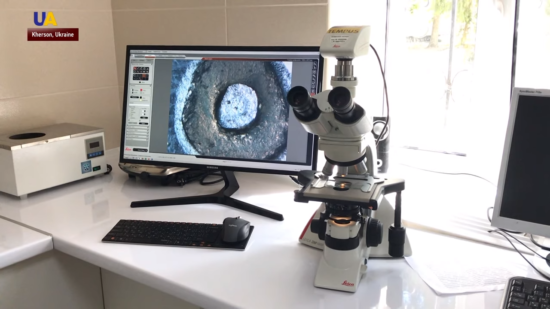The shells have been drilled on both sides. Instead of sand grains, as it happens in nature, scientists put glass beads inside. The holes were sealed with furniture plugs. Afterwards, the mussels were placed in a tank, where they lived with fish and crayfish, and fed on filtered water components.
“Do you see these beads? In three months, we opened up such mussels, just like now, and watched how a pearl layer was formed on these beads,” laboratory chief Vitaliy Olifirenko said.
In four months, the beads are covered with a white and purple pearl layer.
For the experiment, scientists caught mussels in the Dnipro-Buh estuary. As a result, they obtained 200 pearls, 1.5 to two millimetres in size. In the future, scientists are planning to change the mussels’ menu
“They lost a lot of weight, they didn’t have enough food. Therefore, in the future, we will conduct research regarding their feeding,” Olifirenko said.
The scientists believe that these techniques need to be developed. The climate in southern Ukraine is similar to that in Chinese provinces, where pearls are grown
“The conditions in southern Ukraine are suitable for growing such unconventional kinds of aquaculture as Australian crayfish, the African giant snail, and these pearls,” head of the department of aquatic bioresources Pavlo Kutishchev said.
During the next stage of the experiment, mussels will be placed in an artificial pond. They will stay there until autumn along with Australian crayfish. Afterwards, they will all be examined and moved into an aquarium for winter
“This is an Australian crayfish. It has a distinctive growth rate. Over a year, it gains enough mass to be sold,” student Ruslan Kyrchu said.
The scientists spent 1.5 years studying the technique in China. The country is a leader in selling artificial pearls. However, the Ukrainian pearls will need about three more years to grow large enough to be sold.













